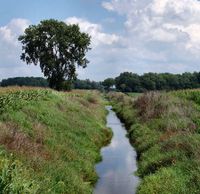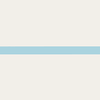Ko:Key:waterway
영어 원본의 내용을 이해할 수 있다면 번역 완료에 힘을 모아 주십시오. 번역 방법에 대해서는 위키 번역 방법에 대한 설명을 읽어주시길 바랍니다. 만약 이 문서의 번역이 충분하다고 판단되면 이 틀을 지워주시길 바랍니다.
이 즈음에는 맡아서 번역을 하는 사람이 없기 때문에, 당신이 이 작업을 해 줄 수 있습니다.
| 설명 |
|---|
| 강이나 그 밖의 물길을 표시하는 데에 씁니다. |
| 그룹: 수로 |
| 해당 요소의 사용 |
| 유용한 조합 |
|
| 상태:사실상 표준 |
| 이 태그를 위한 도구 |
물길(waterway) 키는 강, 개울 또는 배 계류장 같은 물의 흐름이나 댐, 둑 등과 같이 물과 상호 작용하는 요소를 설명하는 데 씁니다.
사용 방법
- See also: Waterways, Relation:waterway
By definition, a waterway is assumed to have a direction of flow. The direction of the way should be downstream (from the waterway's source to its mouth).
For small waterways, a way indicating a direction of flow and its path is sufficient. When a waterway becomes wide enough (preferably 5m or 16.5ft), mapping the area it flows through is desired.
If a waterway way is known to not have water flow year round, it should always be tagged with intermittent=yes. (Non-permanent flow can be further described with the seasonal=* tag to describe when a flow of water exists, but intermittent=yes should still be present in these cases.)
If a waterway is named from its source to its destination, it's strongly suggested that all of its ways be placed in a waterway relation. Doing this allows Nominatim to group the ways together and return exactly one named result per named waterway that exists in OpenStreetMap.
태그 값
주요 waterway=* 값은 다음과 같이 흐르는 형태에 따라 나눕니다:
| Free flow | Pipe flow | ||||
|---|---|---|---|---|---|
| 인공 | 한데 | culvert (관로) | flooded 터널 | pipeline | |
| canal (쓰임새가 있는 물길) | pressurised | ||||
| ditch (배수 도랑) | |||||
| drain (배수관로) | |||||
| 자연 | 한데 | 굴 | |||
| river (강, 내) | |||||
| stream (도랑) | |||||
| tidal_channel (갯골) | |||||
The only questions to ask to get the difference between Free flow and Pipe flow is Does water flow inside a closed space and can air get inside the conduit? If yes, the water can't be pipe flow and you'll have to choose for an according waterway=* value from the table.
Even if waterway=* values can be refined or replaced, it would be really nice to preserve the distinction between free/open channel and pipe flow features. It's really important data for water management and resource planning.
When mapping some human made water channelling features, remember to describe particular intakes and outfalls with inlet=*, outlet=* and man_made=outfall.
| Key | Value | Element | Comment | Carto rendering | Photo | |
|---|---|---|---|---|---|---|
Natural watercourses | ||||||
| waterway | river | A river is a wide, natural watercourse that flows from a source to an ocean, sea, lake or another river. For narrow naturally-formed waterways, see waterway=stream. | ||||
| waterway | stream | A naturally-formed waterway that is too narrow to be classed as a river. An active, able-bodied person should be able to jump over it. | ||||
| waterway | tidal_channel | A natural tidal waterway within the coastal marine environment with bi-directional flow of salty water which depends on the tides. | ||||
| waterway | flowline | Slow-moving flow through a water body. | ||||
Artificial waterways | ||||||
| waterway | canal | An artificial open flow waterway used to carry useful water for transportation, waterpower, or irrigation. (Other languages). | ||||
| waterway | pressurised | A waterway where water is flowing in a fully enclosed conduit and subject to pressure; this includes gravity-driven penstocks and siphons and pump-driven pipelines, for example. | ||||
| waterway | drain | An artificial free flow waterway used for carrying superfluous water like storm water or industrial discharge, usually lined with concrete, stones or similar. | ||||
| waterway | ditch | A small artificial free flow waterway used for carrying superfluous water for drainage or irrigation purposes, usually unlined. | ||||
| waterway | fairway | A navigable route in a lake or sea marked by buoys. The navigable area marked by the buoys can be mapped with seamark:type=fairway. | ||||
| waterway | fish_pass | A |
||||
| waterway | canoe_pass | A canoe pass is a structure on or around artificial barriers (such as dams and locks) to enable whitewater praticants to go through those barriers | ||||
Facilities | ||||||
| waterway | dock | An 'enclosed' area of water which the height of the water can be managed. | ||||
| waterway | boatyard | Boat yard – a place for constructing, repairing and storing vessels out of the water. | ||||
Barriers on waterways | ||||||
| waterway | dam | A wall built across a river or stream to impound the water. A dam normally does not have water flowing over the top of it. | ||||
| waterway | weir | A barrier built across a river to control speed and depth. Water can still flow over the top. | ||||
| waterway | waterfall | A waterfall, use in combination with natural=cliff | ||||
| waterway | rapids | A natural barrier, formed by a fast-flowing, often turbulent, section of the watercourse. | ||||
| waterway | lock_gate | To mark the position of gates at each end of a lock. Alternatively, for smaller locks use a single lock=yes node in the middle of the lock. | ||||
| waterway | sluice_gate | A sluice gate is a movable gate to control water flow. | ||||
| waterway | floodgate | Floodgate regulates the flow of water from a body of water by shutting out, admitting, or releasing water from a reservoir, river, stream, canal. | ||||
| waterway | debris_screen | Debris screen (or trash rack (US) prevents water-borne debris (such as logs, boats, etc.) from entering the intake of a water mill, pumping station or water conveyance. | ||||
| waterway | security_lock | Flood barrier | ||||
| waterway | check_dam | Flood and debris barrier | ||||
Other features on waterways | ||||||
| waterway | turning_point | A place to turn the driving direction for vessels, where the boats are longer than the river/canal is wide. Use maxlength=* to denote the maximum length of the vessel. | ||||
| waterway | water_point | A place to fill fresh water holding tanks of a boat. | ||||
| waterway | fuel | A place to get fuel for boats. | ||||
Some additional attributes for waterways | ||||||
| intermittent | yes | Indicates that the waterway is sometimes dry and sometimes contains water. | ||||
| seasonal | yes, spring, summer, autumn, winter, wet_season, dry_season | Indicates that a waterway has a seasonal (yearly cyclic) flow, usually flowing continuously for at least some part of the year. | ||||
| destination | name | Name of the body of water the linear feature flows into. | ||||
| lock | yes | A lock is used for moving boats between waterways at two different levels. Can tag either the section of the way between the gates (detailed) or just a single node in the waterway (less detailed). | ||||
| mooring | yes, private, no | A length of bank where boats are explicitly permitted to moor. maxstay=* should be used for timing information. | ||||
| usage | See the key for details | Possible uses of the waterway. Use semicolons to separate. | ||||
| tunnel | culvert | A short tunnel usually installed under roads, railways or building. Its size doesn't allow human to get inside and is as narrow as the structure is supposed to go under. For streams passing under a road in culverts use tunnel=culvert+layer=-1 on the section of stream passing under the road. Don't use either of these tags for streams passing under bridges. | ||||
| tunnel | flooded | A long (> 100 m) tunnel where flowing water or other fluid prevent humans from safely walking inside despite its appropriate diameter or size. Water inside can be pressurised or not, used in combination with any waterway=* linear value. waterway=*. | ||||
| bridge | aqueduct | A bridge which conveys an artificial waterway over a road, valley, or another waterway. | ||||
| waterway | user defined | All commonly used values according to Taginfo | ||||
Tags used in combination
- bridge=aqueduct – A bridge which conveys an artificial waterway over a road, valley or waterway
- narrow=yes – Relative indication that a way gets narrower
- width=* – The width of a feature
Possible tagging mistakes
See man-made waterways above for better alternatives.
See also
- natural=spring - A place where ground water flows naturally from the ground
- natural=coastline - The mean high water (springs) line between the sea and land (with the water on the right side of the way)
- Relation:waterway - A relation used for waterways to build a unique object for each river
- Hydropower project documentation
































